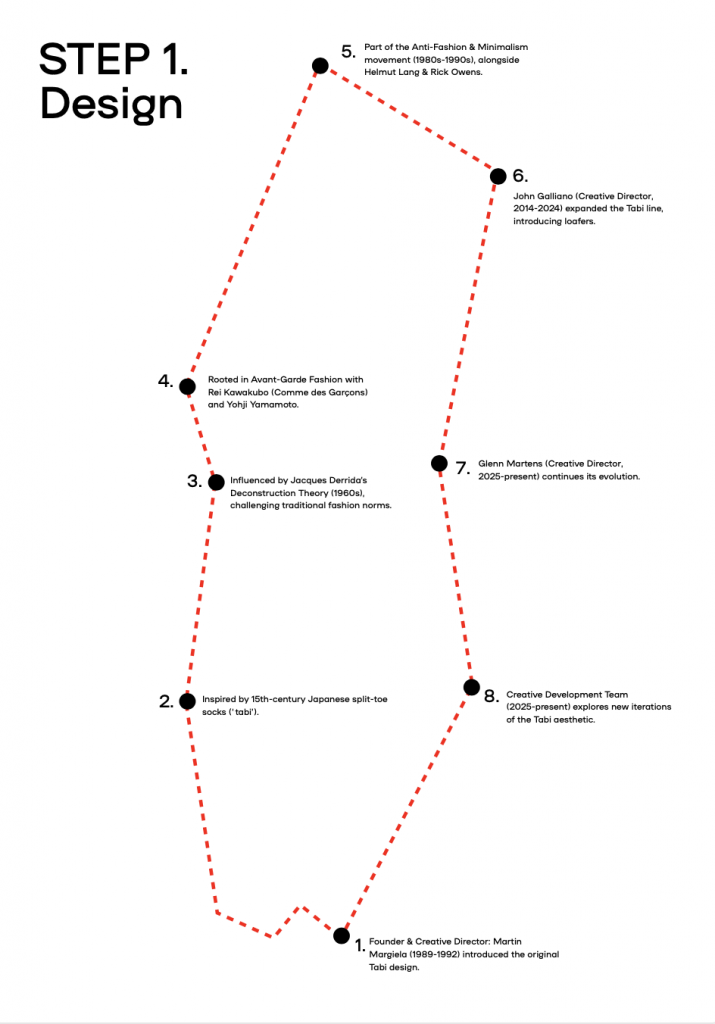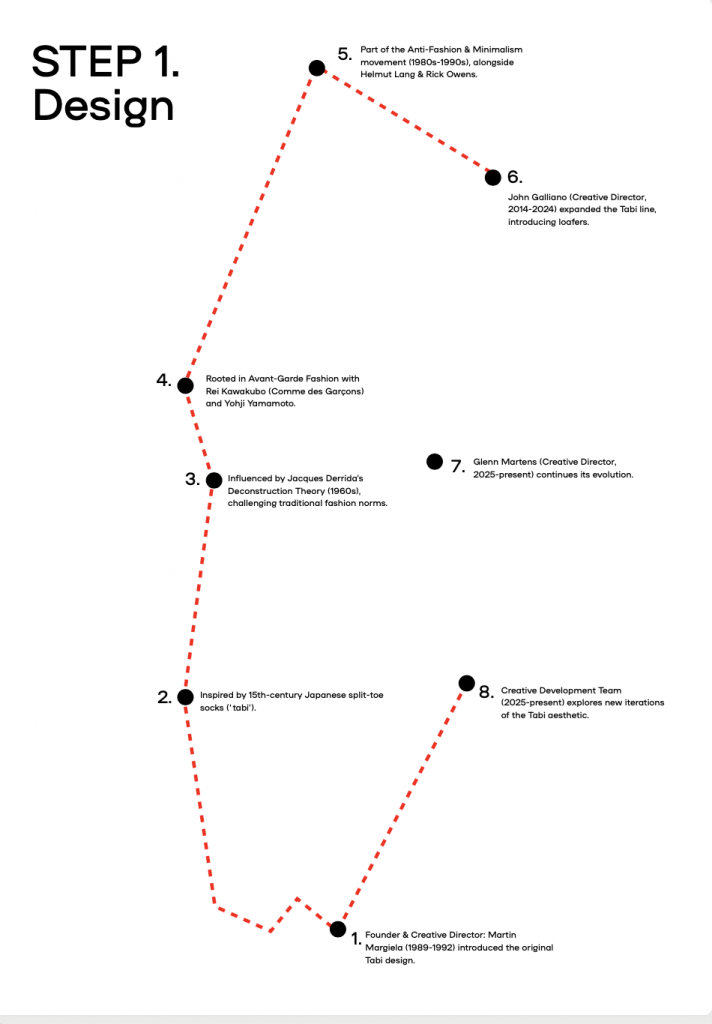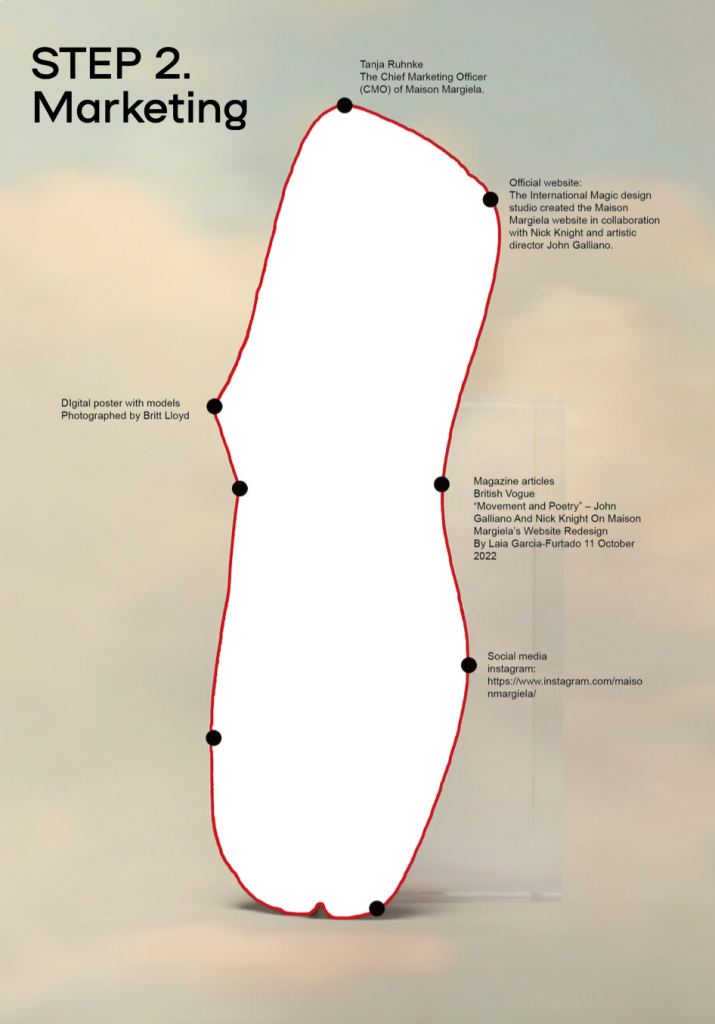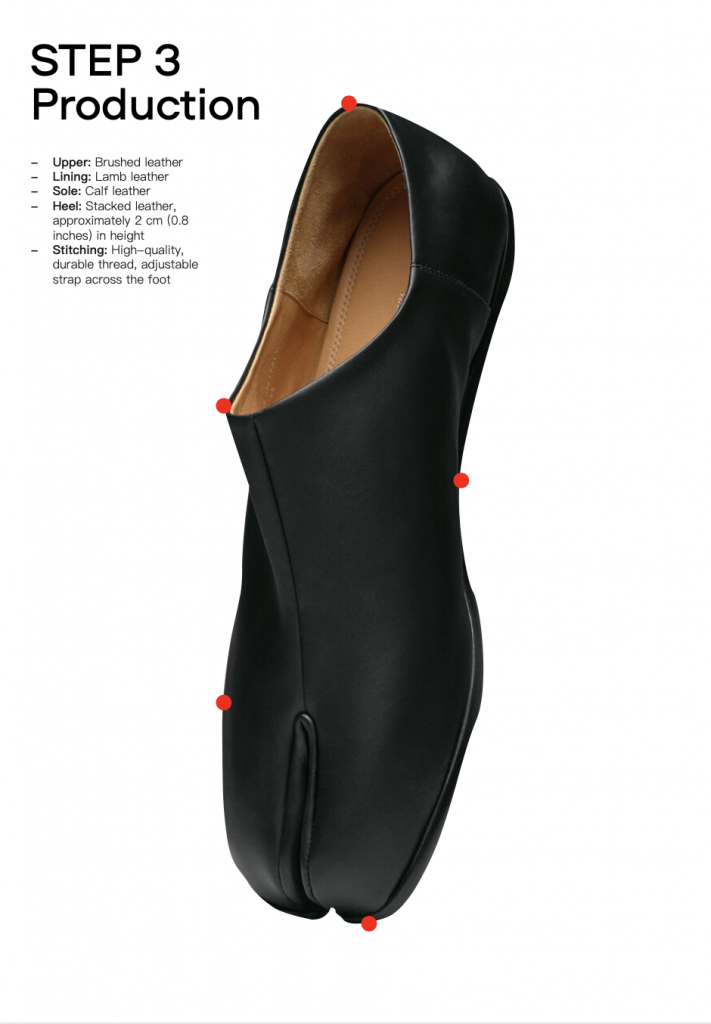Reflections on the Multidimensional Citation Workshop: Tracing the Origins of the Margiela Tabi
Participating in the Multidimensional Citation Workshop was an exciting opportunity to rethink how we approach information. Instead of simply gathering sources and referencing them in a traditional format, we explored how information flows across different media, disciplines, and cultural contexts. Our task was to map the origins and influence of a specific object, and our group chose the Maison Margiela Tabi shoe—an iconic yet controversial design with a rich history of reinterpretation.
Mapping the Tabi: A Visual Exploration of Influence
The Tabi shoe, first introduced by Martin Margiela in 1988, is far more than just a fashion statement—it is a design deeply embedded in historical and cultural exchanges. We traced its lineage back to 15th-century Japanese split-toe socks (tabi), traditionally worn with geta sandals. From there, we mapped how the concept evolved, influencing both high fashion and subcultures, from avant-garde runways to underground streetwear.
Through our citation visualization, we examined how the Tabi design has been referenced, modified, and debated across fashion, media, and consumer culture. The research process made us question the nature of originality: Is Margiela’s Tabi an act of cultural appropriation or reinterpretation? How does a historical reference gain new meaning when placed in a contemporary fashion context?
The Process: From Data to Narrative
One of the most challenging yet rewarding aspects of this workshop was translating research into a multidimensional visual format. Instead of listing sources in a linear way, we experimented with networks, timelines, and layered citations to illustrate how ideas are continuously recycled, challenged, and expanded upon.
Key elements of our visualization included:
- Cultural Origins: The traditional Japanese tabi and its functional significance.
- Margiela’s Interpretation: The 1988 debut and how the design subverted traditional fashion norms.
- Media Influence: Celebrity endorsements, high-fashion editorials, and digital discourse shaping its perception.
- Consumer Reactions: The division between cult appreciation and mainstream skepticism.
Takeaways: Seeing Citations Differently
This workshop made me reconsider the way I engage with sources—not just as references but as interconnected nodes in a larger system of meaning-making. The act of citing is not just about acknowledging past knowledge, but about contributing to an evolving dialogue.
By mapping the Tabi’s trajectory, I gained a deeper appreciation for how fashion, history, and cultural exchange intersect. It was a reminder that no idea exists in isolation, and that citation—whether in academic research or design thinking—can be a powerful tool for storytelling.
Below are snapshots from our process and final visualization:



